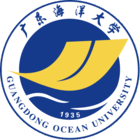详细信息
Seasonal and interannual variability of coccolithophore flux in the northern South China Sea ( SCI-EXPANDED收录 EI收录) 被引量:14
文献类型:期刊文献
英文题名:Seasonal and interannual variability of coccolithophore flux in the northern South China Sea
作者:Priyadarshani, W. N. C.[1,2,3,4];Ran, Lihua[2,3];Wiesner, Martin G.[5,6];Chen, Jianfang[2,3];Ling, Zheng[7];Yu, Shujie[8];Ye, Ying[1]
机构:[1]Zhejiang Univ, Ocean Coll, Dept Marine Resource & Environm, Zhoushan 316000, Peoples R China;[2]State Ocean Adm, Key Lab Marine Ecosyst & Biogeochem, Hangzhou 310012, Zhejiang, Peoples R China;[3]Minist Nat Resources, Inst Oceanog 2, Hangzhou 310012, Zhejiang, Peoples R China;[4]Natl Aquat Resources Res Dev Agcy, Natl Inst Oceanog & Marine Sci, Mattakkuliya 15, Colombo, Sri Lanka;[5]Univ Hamburg, Inst Geol, D-20146 Hamburg, Germany;[6]Tongji Univ, State Key Lab Marine Geol, Shanghai 200092, Peoples R China;[7]Guangdong Ocean Univ, Guangdong Key Lab Coastal Ocean Variabil & Disast, Zhanjiang, Peoples R China;[8]State Ocean Adm, State Key Lab Satellite Ocean Environm Dynam, Hangzhou 310012, Zhejiang, Peoples R China
年份:2019
卷号:145
起止页码:13
外文期刊名:DEEP-SEA RESEARCH PART I-OCEANOGRAPHIC RESEARCH PAPERS
收录:SCI-EXPANDED(收录号:WOS:000465055400002)、、EI(收录号:20190606486086)、Scopus(收录号:2-s2.0-85061121036)、WOS
基金:Financial support was provided by the National Natural Science Foundation of China (41006034 and 91128212), the State Key R&D Project of China (2016YFA0601101), the Special Fund for Basic Scientific Research of the Second Institute of Oceanography (JT1401, ST1010, and JG1220), the open Fund of the key Laboratory of Satellite Ocean Environment Dynamics (SOED1709), and the German Ministry of Education and Research (03F0727A, 03F0604A, and 03F0673A). This study is part of the joint Sino-German research program of "Impact of the ENSO-Monsoon System on the Biogeochemical Fluxes in the northern South China Sea" between the Second Institute of Oceanography, SOA, China and the Institute of Geology, University of Hamburg, Germany. Support by the Chinese Scholarship Council (CSC) under the State Oceanic Administration Marine Scholarship for Foreign Students is appreciated. We also thank Alba Marina Cobo Viveros and Akinnigbagbe Edward for providing helpful comments, and Dr. Hongliang Li for recovering the sediment traps.
语种:英文
外文关键词:Coccolithophore; Extinct and extant species; Seasonality; Interannual variability; Mesoscale eddies; Lateral advection; Northern South China Sea
外文摘要:Coccolithophorids are key player in the marine biological pump and marine carbon cycle, as their production and community-structure are crucial for export and sequestration of carbon from the atmosphere to the deep sea with important implications to climatic trends. Variations in the species composition of coccolithophore communities largely reflect environmental changes and are therefore fundamental for palaeoceanographic reconstructions. The South China Sea (SCS) is an ideal area to study the response of coccolithophores to environmental change because of the remarkable seasonal and interannual variations of the monsoonal climate and the hydrography. However, to date only limited studies on the temporal changes of coccolithophores in the modern SCS have been reported. In the present work, coccolithophores in the northern SCS were investigated using time-series sediment traps during 2009-2010 and 2011-2012, Extinct coccoliths which had their last occurrence in the Miocene (e.g. Triquetrorhabdulus longus, Redculofenestra floridanus), Pliocene (e.g. Reticulofenestra pseudoumbilica, Discoaster auras), and Pleistocene (e.g. Pseudoemiliania locunosa, Discoaster variabilis) were a frequent component of the coccoliths throughout all the seasons and provided, for the first time, a strong micropaleontological evidence for lateral advective transport in the deep SCS. The source of the fossil coccoliths most likely were the reworked Pleistocene sands which cover the outer shelf and upper slope to the west and south of the Dongsha Islands between 20 m and 600 m water depth. These sediments contain limestone fragments with foraminiferal assemblages of Miocene to Pliocene age, and, to the north and south of the islands, Miocene strata are exposed on the sea floor. Mesoscale eddies, both cyclonic and anticyclonic, were probably the main agent for resuspending and transporting the coccoliths as they propagated westwards alongslope from the Dongsha area to the mooring site. Extant coccolithophore were composed of 31 taxa with Florisphaera profunda, Gephyrocapsa oceanica, and Emlliania huxleyi contributing 91.4% and 83.8% of the annual coccolithophore export flux in 2009-2010 and 2011-2012, respectively; F. profunda was the predominant species. Enhanced fluxes of extant coccoliths occurred in the summer of 2009/2010, spring 2010, autumn 2011 and winter 2011/2012, but varied in phase with the extinct species. Therefore, lateral advection of extant taxa may have also taken place but the extent to which this may have masked primary signals from in-situ coccolithophore production remains open. The low fluxes of coccoliths in the winter of 2009/2010 in association with relatively reduced wind strength, higher SST and a shallower mixed layer might compared to those of 2011/2012 have been driven by the weak El Nino event, which affected the northern SCS during that season.
参考文献:
![]() 正在载入数据...
正在载入数据...


